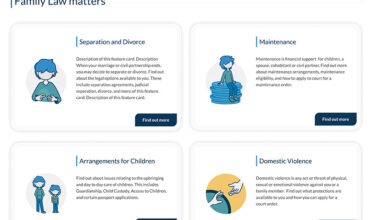Justice Sector Innovation Strategy aims to maximise efficiency

In January 2023, the Government launched the first Justice Sector Innovation Strategy, which it states aims to “lay the firm foundations which will support our people and organisations to respond innovatively to the challenges of an increasingly complex and uncertain world”.
An initiative under the aegis of the Civil Service 2030 Renewal Strategy, the innovation strategy aims to enable the justice sector to improve on current service delivery, enhance consistency, fairness and inclusion, reduce inefficiencies, and increase the resilience of the Department of Justice’s services and teams.
The Department of Justice states that the strategy’s metrics for success will be “if internal and external customers have benefitted from the better outcomes which have emerged as a result of the innovations or innovation models”.
The strategy document outlines eight justice sector innovation commitments and three delivery phases for the actions outlined in the innovation commitments.
Justice sector innovation commitments
The strategy outlines eight justice sector innovation commitments which, the Department of Justice states, “are developed in such a way that they can be taken by each agency and used to guide the work in their area”. The commitments are:
1. Enhanced collaboration and trust: Cross-sectoral collaboration will happen more frequently throughout innovation processes, with time allocated for trust and relationship building and collaborative planning as part of innovation initiatives;
2. Put the customer at the centre of innovation: Customer-centric innovation will mean that the identification of “customers” is key, followed by in-depth analysis of their diverse needs through engagement, co-design, and testing of innovation with those customers before and after deployment;
3. Lead and encourage innovation: It is incumbent upon leadership and management at every level to encourage the sharing of new ideas to empower teams to engage in innovative processes, to try new ways of doing things, and to learn from mistakes made along the way. The sector is committed to creating clear pathways for the development and evaluation of ideas, and novel solutions to problems;
4. Constant incremental innovation: Innovation of the everyday – the improvement of the services already delivered, and the constant incremental optimisation and iteration of customer experiences will be encouraged, recognised, and supported across the sector;
5. Innovate transparently and engage stakeholders: The justice sector aims to innovate openly, involving those who are touched by and help deliver its evolving services. It will share successes, failures, and new knowledge across the sector and beyond, and will encourage and support replication of successful innovations;
6. Share knowledge and develop skills: The Department of Justice will identify, document, and share examples of innovation practice from across the sector to encourage replication where appropriate. It will also develop knowledge of potential models which might further support innovation. The Department will continue to support innovation with training, innovation management, innovation models and tools, benchmarking, and measurement;
7. Anticipate and respond to change: The Department committed to embedding strong feedback loops to drive innovation – allowing quantitative and qualitative measurement of the Department’s services’ performance, and iteration of those services in response. The Department will enable continuous optimisation, as well as step-changes where required, in response to the needs of policy and society. The department states that it does this to achieve better outcomes for those it serves; and
8. Move from outputs to outcomes: The Department will define and focus upon core outcomes towards which to innovate. Those outcomes will drive value for those the justice sector serves. The Department will identify and work towards these outcomes in its innovation pilots and in the daily innovation of its operational services. These outcomes will drive its work and contribute to a safe, fair, and inclusive Ireland.
Phases and actions
In order to support the implementation of the strategy, three key phases have been identified with specific actions:
1. Phase 1 – Building blocks and firm foundations (six months): The justice sector innovation team will lead phase one, expanding the existing justice sector innovation network. They will have initial responsibility for recruiting additional innovation ambassadors from the workforce across the sector, engaging with agencies and bodies, measuring the baseline innovation maturity across the sector, and enabling communication across the network on best practice, training, events, and supports. This is the foundation phase, after which the innovation strategy will be implemented across the sector, supporting and accounting for the autonomous actions of the agencies and bodies aligned to the innovation commitments.
2. Phase 2 – Implementing innovation (12-18 months): Agencies and bodies will utilise the training and resources on offer, and proactively collaborate with the innovation lab at the Department of Justice and the wider sector. There is a responsibility to note and measure incremental innovation and more disruptive innovation projects.
3. Phase 3 – Innovation as usual (six-12 months): This phase considers the progress made under previous initiatives and supports the proliferation of proven innovation practices across operations. There may be new commitments which emerge and require strategic support and attention. This is a responsive strategy and further actions may arise following phase one and phase two in response to new requirements.
Upon publication of the strategy in January 2023, Secretary General of the Department of Justice, Oonagh McPhillips, said: “This strategy builds on the work already being done across the sector to innovate and enhance services for the public, but for the first time puts all the agencies and bodies of the sector working on a common innovation pathway.”





